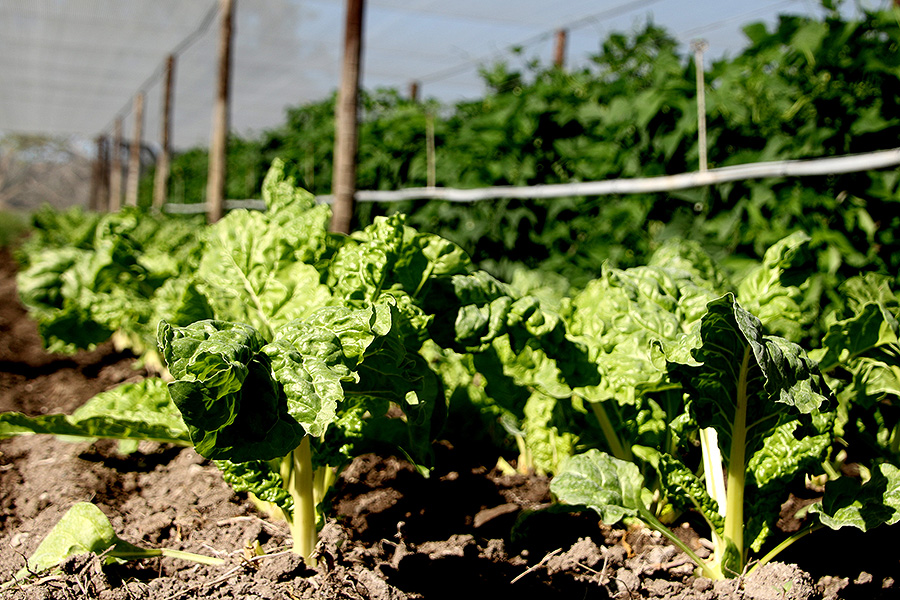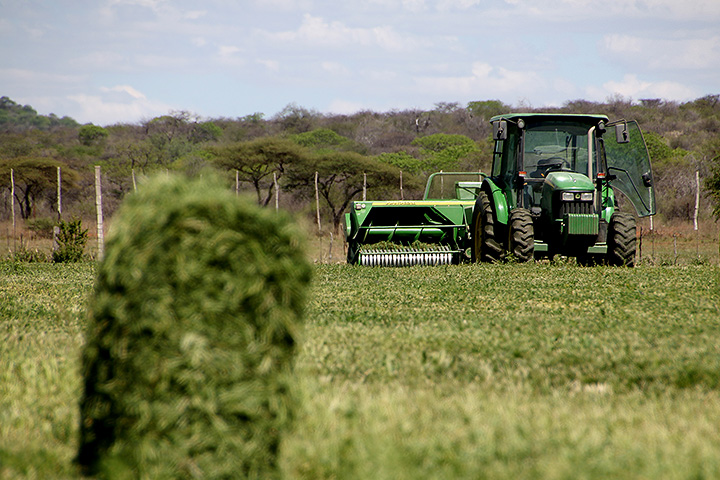With the launch of our first newsletter in 2024, we would like to give an overview of the current agricultural situation at Ghaub. This overview is only a very brief summary, which will be complemented by a series of more detailed reports in the upcoming issues.
Strategic Location and Characteristics of the Area
The farm Ghaub is located in the so-called Otavi Triangle, an area with unique characteristics. Here, rainfall is about 20% above the average of the surrounding areas, and the likelihood of precipitation is also 20% higher. Another advantage is that the rainfall collects in the karst rock and does not drain away. Frost is rare here. Additionally, the region has good road access and offers excellent shopping opportunities in the three surrounding towns of Otavi, Grootfontein, and Tsumeb.
Important Features of the Farm
In the center of the farm stretches a high sandstone mountain range from east to west. Sandstone is rare in this karst region, and for Ghaub, this is an absolute stroke of luck. The southern part of Ghaub, as well as all farms located to the south, consist exclusively of limestone of varying hardness. These karst areas are also higher than the center of Ghaub. As a result, the underground water veins all move towards the sandstone ridge, which forms a barrier. This leads to multiple springs along the course of the sandstone mountain range. Ghaub has four main springs, each providing about 50 to 60 cubic meters (50/60,000 liters) of water per hour.
With an area of 19,200 hectares, it is one of the largest farms in the region, with 8,900 hectares allocated for wildlife and tourism, 10,000 hectares for cattle breeding, and 300 hectares each for cultivation as well as grass and hay production. However, the boundaries are not always clearly defined and often overlap.
Economically, the farm thrives in these main sectors: tourism, irrigation farming, hay and vegetable production, wildlife, and cattle breeding, creating a diverse and strengthened economic unit.
Cultivation under Irrigation, Hay, and Vegetable Production
In this area, maize and sorghum are often cultivated. The expected maize yield in dryland farming ranges from 3 to 5 tons per hectare, and in irrigated farming, it can reach up to 9 tons per hectare. Maize cultivation is risky due to drought, high cultivation costs, and the unfavorable ratio of machinery costs to the size of the cultivated area. Additionally, low phosphate levels in the soil lead to high fertilization costs, which resulted in us discontinuing maize cultivation at Ghaub.
Instead, we cultivate lucerne on 32 hectares. Lucerne is a highly protein-rich animal feed. Ghaub also benefits from the strong purchasing power of the hospitality industry of ONE, enabling gradual investments in greenhouses and new water infrastructure. Currently, we harvest approximately 60% of the vegetables used in the lodges of ONE. About 300 hectares are currently used for grass and hay production, with Ghaub continuously expanding the area as a result of the land reform, which is leading to the creation of more small farms that require feed during times of drought.
Cattle Farming in Namibia
Raising cattle in Namibia has a proven history of some 300 years. The country offers vast grazing lands where cattle can thrive in free-range conditions. Namibia is largely free from diseases, thus requiring minimal medication for the cattle. The many thousands of hectares of grazing land can hardly be used for other purposes. An alternative option is wildlife farming, although this initially requires significant investments, such as in fences.
Currently, we have 800 cattle at Ghaub. However, the farm could sustainably and permanently support more than 1000 cattle. Therefore, the herd is intended to be further enlarged.
The above is based on our experiences, stemming from a family with over 120 years of agricultural expertise in the country. However, this is not a generalization for every farm in Namibia, as various ecological factors influence the production capabilities of farms. This brings us to our upcoming issue, where we will examine a study conducted by the University of Namibia on the condition of the grazing landscape at Ghaub and its neighboring farm. Students have fenced off strategic quadrants on both farms and measured the standing herbaceous yield – a crucial metric for understanding vegetation productivity and the availability of fodder for grazing animals.

In Ghaub, 60% of the vegetables used for the lodges by ONE Namibia are grown.




